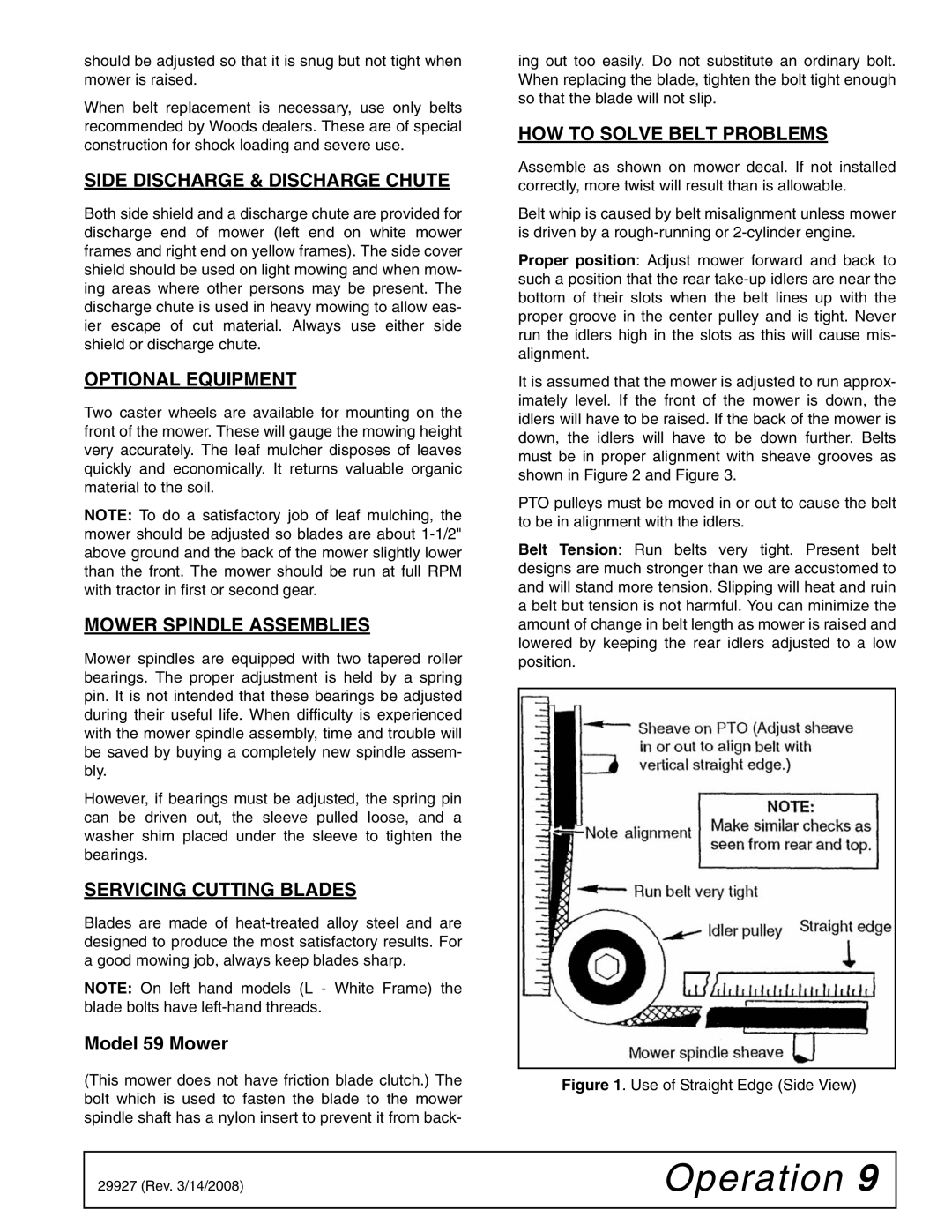59C-2 specifications
The Woods Equipment 59C-2 is a robust and versatile implement that embodies the quality and durability associated with the Woods brand. Designed for compact tractors, this rotary cutter is a perfect solution for maintaining pastures, fields, and overgrown areas. It offers a combination of efficiency and performance, making it a favorite among agricultural operators and landowners alike.One of the main features of the 59C-2 is its rugged construction. Built with a heavy-duty frame and premium materials, this cutter can withstand the rigors of daily use. Its 59-inch cutting width allows it to cover substantial areas quickly, increasing productivity. The cutter's design is also optimized for maneuverability, making it effective in tight spaces and around obstacles.
A standout characteristic of the Woods 59C-2 is its heavy-duty heat-treated blades. These blades are engineered to provide a clean and precise cut, ensuring that grass and brush are evenly trimmed. The blades are also replaceable, allowing users to maintain optimal cutting performance over time. This feature significantly reduces maintenance costs and extends the life of the cutter.
In terms of technology, the 59C-2 incorporates a slip clutch protection system. This system is essential for safeguarding the tractor and implement from potential damage caused by unexpected obstacles. When the blades encounter a tough object, the slip clutch disengages, preventing undue strain on the drivetrain and ensuring a longer lifespan for both the tractor and rotary cutter.
Another notable aspect of the Woods 59C-2 is its adjustable cutting height capability. Operators can easily set the desired height from 1.5 to 4 inches, allowing for flexibility in different mowing conditions and crop types. This adaptability is particularly beneficial for varying terrain and growth levels, providing a tailored approach to land management.
To facilitate easy attachment to a variety of compact tractors, the Woods 59C-2 features a universal mounting system. This design ensures a quick and straightforward setup, allowing operators to switch between implements seamlessly.
Overall, the Woods Equipment 59C-2 rotary cutter stands out for its durable construction, advanced technology, and versatile features, making it an excellent choice for anyone looking to maintain their property with efficiency and ease. Whether tackling tall grass or thicker brush, this implement demonstrates the quality performance that Woods Equipment is known for.

